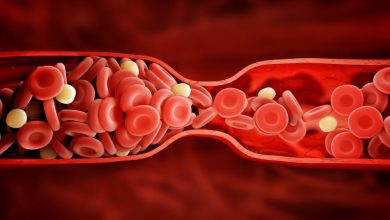Pulmonary Services: What Is Pulmonary Critical Care.

Every year more than 5 million patients in the United States are admitted to intensive care units for various complications. These include pulmonary conditions as well that renders the person incapable of breathing. To avoid such medical concerns turning into fatal outcomes, it is important to educate yourself regarding pulmonary critical care.
In this article, we discuss different respiratory conditions that require immediate critical care specialist services in Michigan to prevent life-threatening consequences.
What is Pulmonary Critical Care?
Pulmonary critical, a specialized field of emergency medicine, deals with the treatment of diseases related to the respiratory system. It is also known as critical care medicine and considers patients with injuries or diseases of the lungs, trachea, diaphragm, and pulmonary-related structures.
The Difference between Pulmonary Medicine and Pulmonary Critical Care? The difference between the two medical specializations lies in their names and severity. Pulmonary medicine includes the etiology, diagnosis, management, and prevention of diseases that affect the pulmonary system. On the other hand, pulmonary critical care deals with the diagnosis, treatment, and prevention of similar diseases but in critically ill patients. Such individuals require constant and intensive monitoring along with organ system support.
How Does It Save Your Life?
Certain pulmonological conditions can be fatal for human beings. Be it asthma or pneumonia, these common respiratory disorders may turn fatal and hence require intensive care. While pulmonology medicine is efficient in managing both acute and chronic respiratory diseases, its scope doesn’t include emergency crises. Here’s when pulmonary critical care medicine saves a person’s life. It leverages procedures and medications that provide instant relief, stabilizing the patient’s condition.
Critical Care Pulmonologist:
Critical care pulmonologists or intensivists are the physicians who practice within this field of emergency medicine. They are primarily found in a hospital’s intensive care unit (ICU), but may also practice in pulmonary clinics. What sets them apart from pulmonologists is their extensive education, training, and decision-making skills whilst in an emergency.
Critical care pulmonologists offer emergency care and collaborate with other critical care physicians and other intensivists. Together they care for patients suffering from multi-system failure and various life-threatening medical conditions. Critical pulmonologists may also be present during surgeries to ensure optimum respiratory health during and after the procedure.
When Do You Need Pulmonary Critical Care?
You may never know when you or your loved one may experience a pulmonology crisis. To avoid fatal consequences, it’s important to identify the signs and call for immediate medical assistance. To help you recognize emergency signs, here’re the conditions that require pulmonary critical care services.
Critical asthma syndrome:
Critical asthma syndrome (CAS) is an umbrella term to include severe worsening of asthma, a condition that requires urgent care. It is clinically presented with shortness of breath, inability to utter complete sentences, and a tight chest.
Acute or chronic respiratory failure:
Acute respiratory failure is a short-term condition, characterized by the incapability to perform its function. As a result, the lungs do not release oxygen and other organs fail to receive oxygenated blood. Chronic respiratory failure has the same pathophysiology as its acute type, but it manifests over a long period. The typical symptoms that require critical care are increased breathing rate, wheezing, shortness of breath, and nose flaring.
COPD:
COPD is a common pulmonary disease, but its acute exacerbation requires immediate medical attention. The conditions are visible as noisy breathing, irregular breathing, bluish lips and nails, and intense coughing. These symptoms indicate that the patient might require oxygen and hence, needs to be taken to the hospital.
Cystic Fibrosis:
Another pulmonary condition that requires critical care is cystic fibrosis. Patients with CF may experience pulmonary exacerbations and require immediate medical assistance. The symptoms include coughing, mucus production, and shortness of breath.
Post-intensive care syndrome:
PICS is a cumulation of medical conditions that persist even after a critical illness. The most common pulmonary concern in PICS is ventilator-associated pneumonia which may require medical assistance if the prognosis worsens.
Pneumonia:
Perhaps, the most heard pulmonary disease after asthma is pneumonia. Severe pneumonia is a critical condition that needs immediate hospitalization. Its symptoms include extreme shortness of breath, cough, fever, chest pain, and chills.
Critical Care Services:
The goal of pulmonary critical care services is to stabilize the patient and restore their ability to breathe. The critical care pulmonologist begins with the assessment of the patient’s current health status to make a diagnosis and treatment plan. They may also look for the damage of any pulmonary condition to other organs and organ systems and collaborate with their specialist physician. You may visit a hospital or a clinic that treats various lung and sleep disorders in Michigan for comprehensive and prompt treatment.
What Are Some Respiratory Care Treatments?
The treatment strategy by critical care pulmonologists includes both medications and invasive and non-invasive procedures. They may prescribe inhaled medications such as bronchodilators or antibiotics. The goal is to deliver the drug as soon as possible to the airways. Inhaled drugs are also prescribed for patients on ventilators because they’re unable to take medications by themselves.
The next approach would be to proffer respiratory support in terms of oxygen therapy. It is a way of providing oxygen through a facemask or tube that is inserted into the nostrils. Another procedure employed is lung volume expansion therapy to increase the lung capacity or to render them clear post-surgery. Physicians use incentive spirometry or CPAP strategies for their purpose.
Some patients are also kept on ventilator support to help them breathe. There are two ways to assist in breathing, non-invasive through a mask and invasive ventilation through a tracheostomy tube.
ECMO, extracorporeal membrane oxygenation is a life-saving technique that is not available worldwide. However, it works together with Survival Flight, to provide care to sick patients from all around the world.
Takeaway:
Stabilizing the patient and regaining their ability to breathe are the main objectives of pulmonary critical care treatments. In order to determine a diagnosis and develop a treatment plan, the critical care pulmonologist first evaluates the patient’s present state of health.
ALSO READ: https://www.esarticle.com/how-much-does-a-dental-crown-cost-in-houston/




